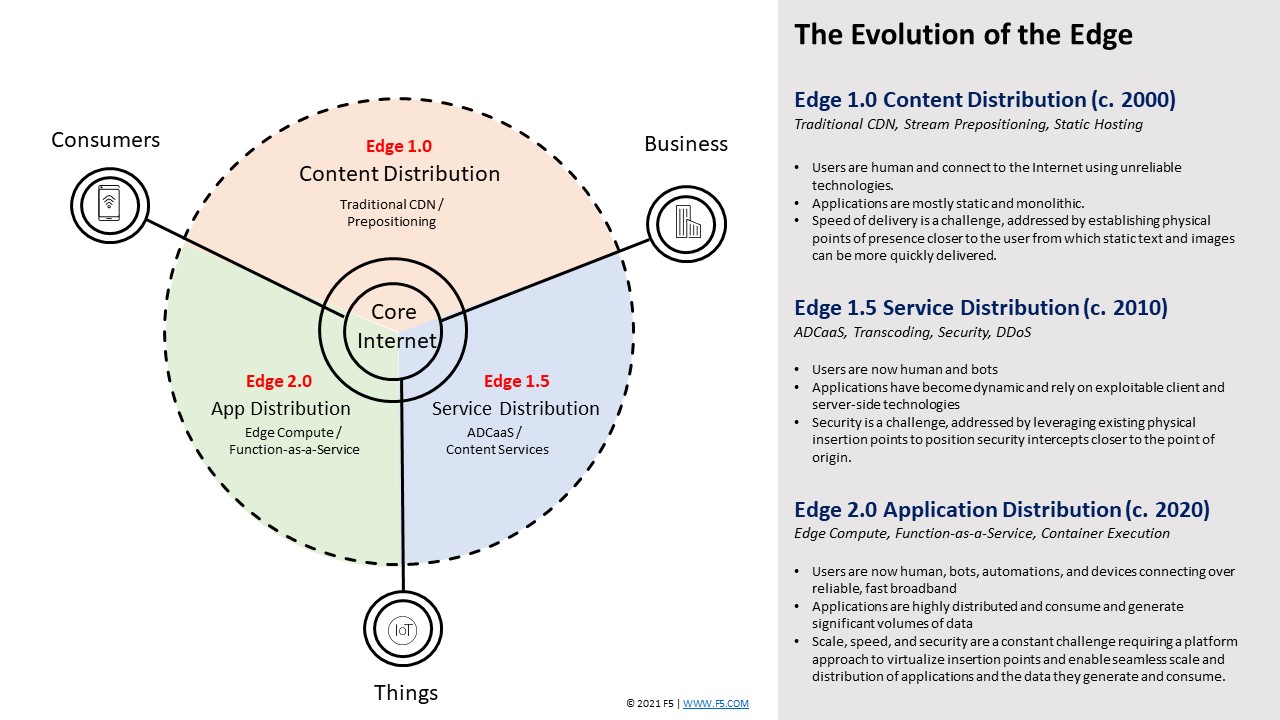The Edge 2.0 Platform: Digitizing Distribution of Applications
You can’t open a browser today without running into the term digital transformation. In the beginning, it was a trendy phrase that described the phenomenon of business moving from paper to digital alternatives. Mobile apps. QR codes. Near field communication.
Today, digital transformation is a movement with momentum. While digital transformation was progressing at steady rate before COVID, the existential threat of a global pandemic restricted physical interaction and drove business to accelerate its efforts. The digitization of every kind of business from the local farmers market to banking to education accelerated to a breakneck speed hitherto unseen in technology markets.
The adoption of cloud and modernization efforts accelerated as organizations ramped up transformation efforts. As they did, they quickly began to run afoul of the challenges that come from operating highly distributed applications. Cloud sprawl, cost overruns, outages, security concerns.
Exacerbating those challenges was a sudden onslaught of traffic at the edge of the network. Global Internet traffic increased 45%. Our use of video and streaming ramped up, but so did our reliance on myriad applications to keep us connected. Applications have become more than a simple convenience; they are now our virtual lifelines and our primary connection to our jobs and our coworkers.
Optimizing and securing those lifelines is an imperative. That imperative drove Edge technologies into the conversation, with promises to do for our digital experiences what it once did for our Internet interactions.
Edge 1.x is Not Enough
Out of the multitude of challenges we’ve seen throughout 2020 rises one inescapable conclusion: the existing edge is no longer sufficient to address the challenges of a highly distributed and massively connected digital world. When the CDN (Content Delivery Network) was born, households had perhaps a single low-speed Internet connection via a modem and PC. Today, the average household boasts an average of ten connected devices. Only two of them are computers. The rest are devices or "things"—mobile phones, smart televisions, lights, security systems, and home automation. Each one of them is a computing device that generates data—sometimes a considerable amount—and processes commands from applications that reside in the cloud and corporate data centers. Devices are much smarter, more-capable entities than they used to be, and yet few applications recognize that they, too, are part of the new edge.
Distributing only content and security services is no longer sufficient because the edge of the Internet now extends far beyond the physical presence relied upon by existing edge offerings.
Today, every application and the devices that use them are a part of the edge. Or they could be, with the right platform.

The edge is now in my house. It’s in my car. It’s in a cell tower and inside a local enterprise data center. The edge is not physical anymore. It’s virtual.
Existing edge offerings are hampered by their reliance on passage through specific physical locations. Their architectures are founded on it, solutions built around it, and execution tied to it. Even the cloud is, at its core, physical. Its presence is tied to data centers, which in turn is tied to locations in which the energy, connectivity, and people to operate them can be found.
Edge 2.0 is a Digital Distribution Platform
Edge 2.0 is not a physical location, but instead recognizes that location is simply another attribute. It’s not just about points of presence and getting geographically closer to the users and things that need access to applications. Edge 2.0 tears down traditional notions of perimeters and boundaries and creates a virtual, digital data center that spans the globe. It unifies a confusing array of cloud APIs and makes multi-cloud manageable. Edge 2.0 digitizes physical resources and enables the secure distribution of applications and data.
Edge 2.0 is effectively an intelligent mesh that operates in any public cloud, data center, or within a managed network where every device or application will inherit policies, management, observability, and become a member of the mesh. It is beyond content or services. It is an Application Distribution Network.
It’s an approach that focuses on applications being properly distributed to its users instead of nailed down to data center availability zones. It recognizes that with changing times and changing technologies, there are now new ways of working that have eclipsed the old ways. It’s an approach that recognizes users aren’t just humans, and applications aren’t just content anymore.
Edge 2.0 is a platform for digitizing distribution of applications.
